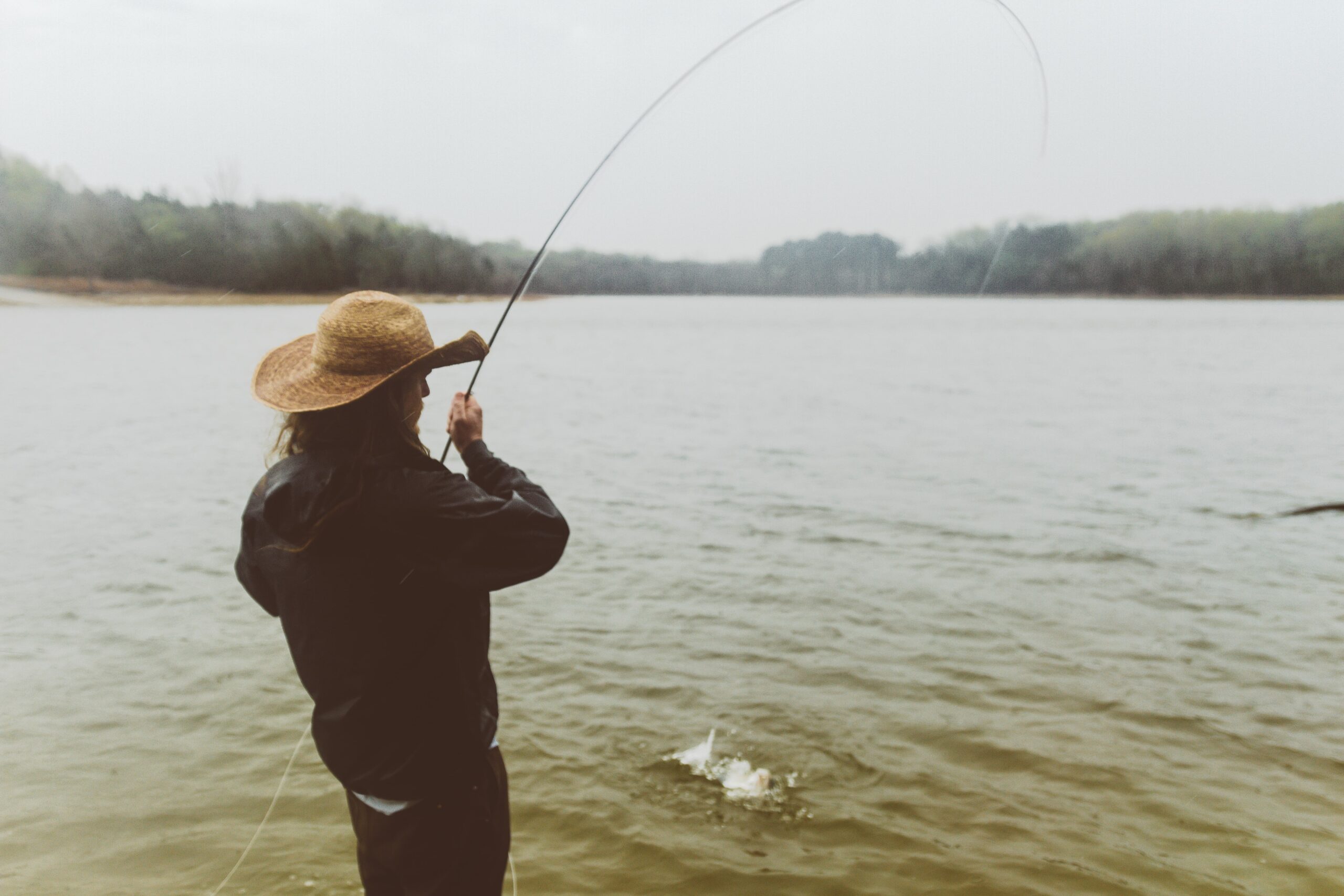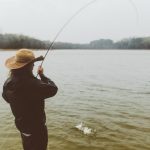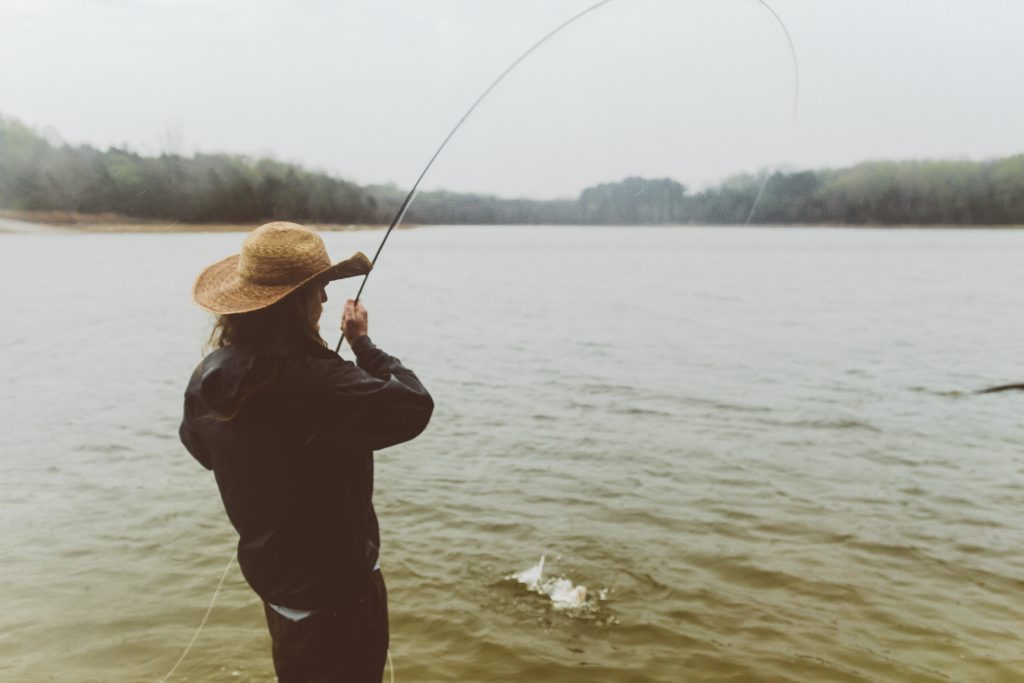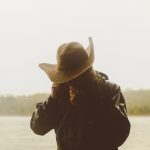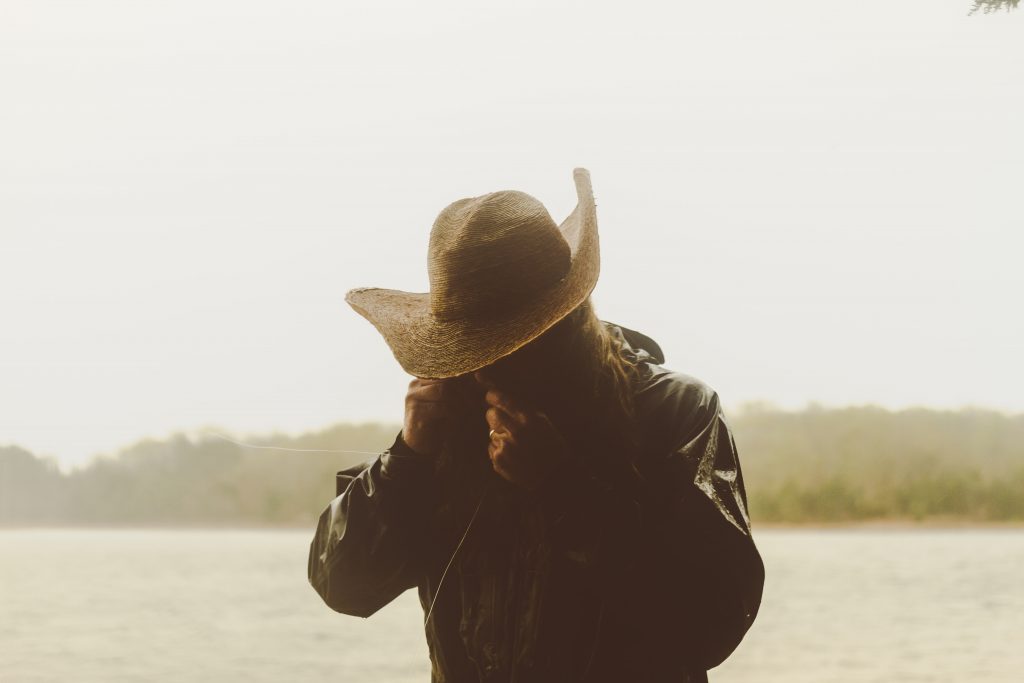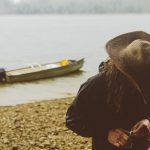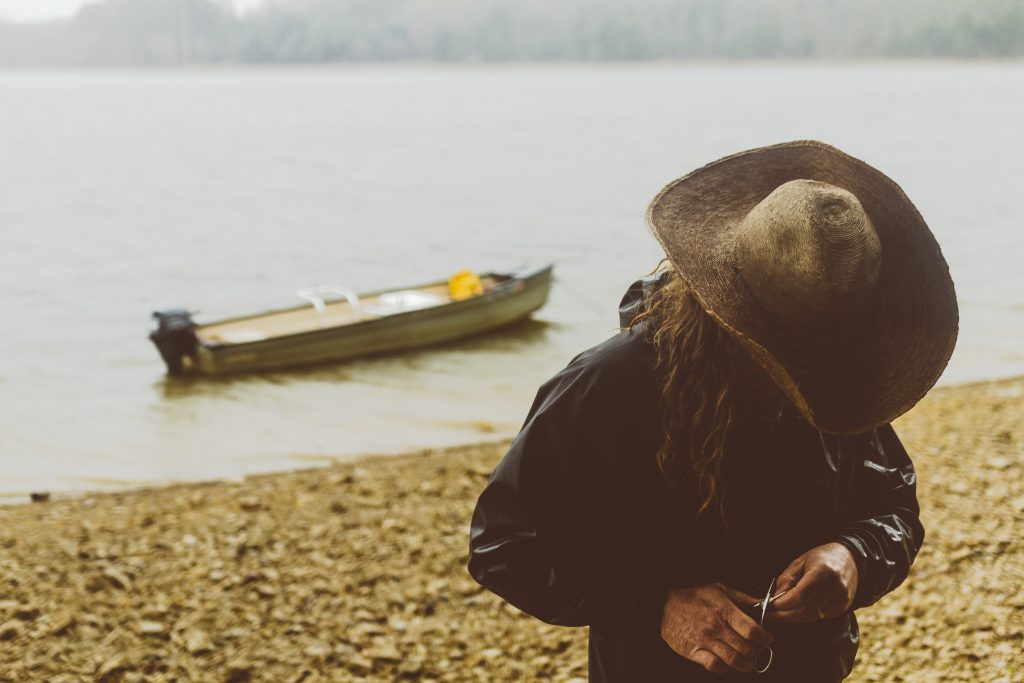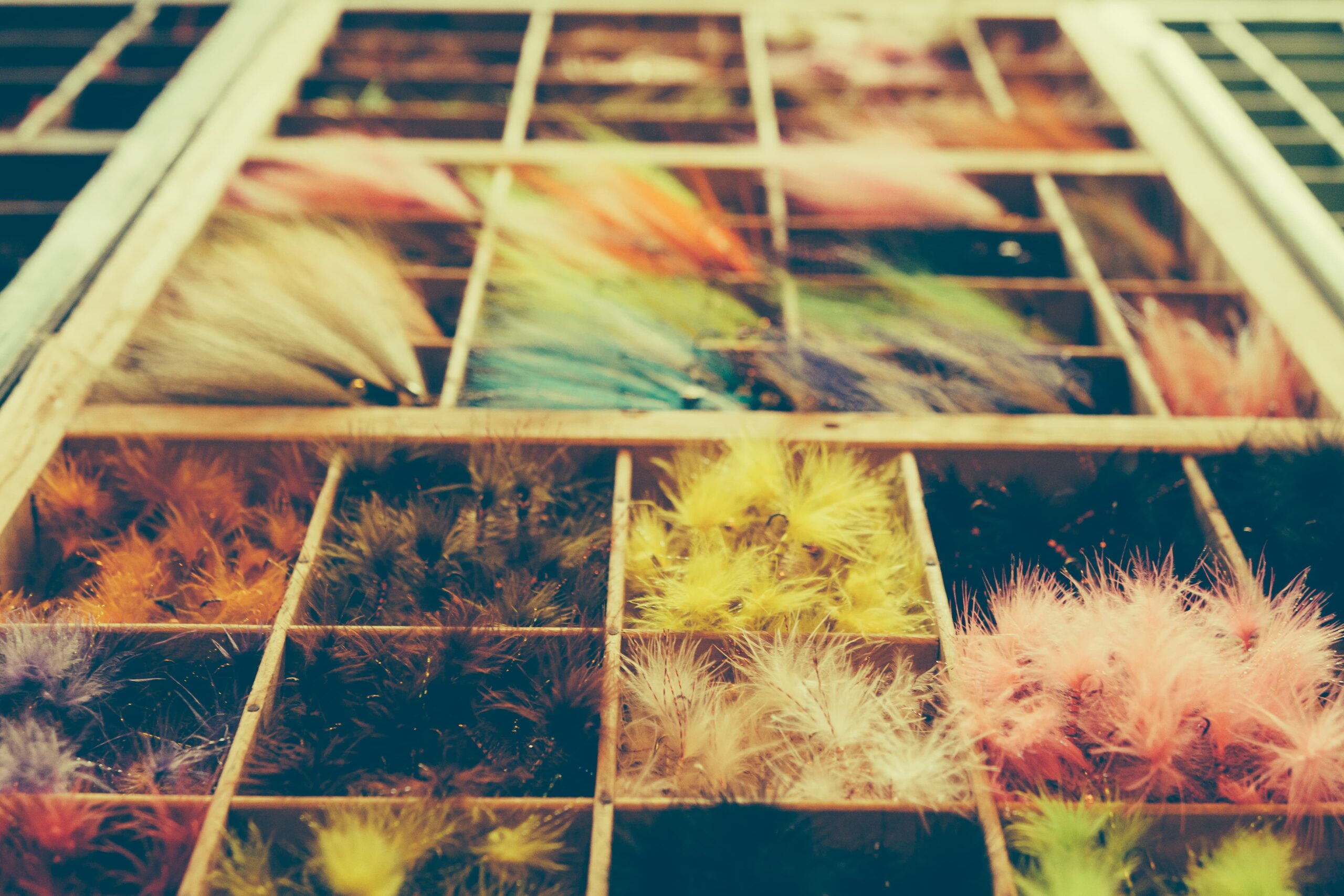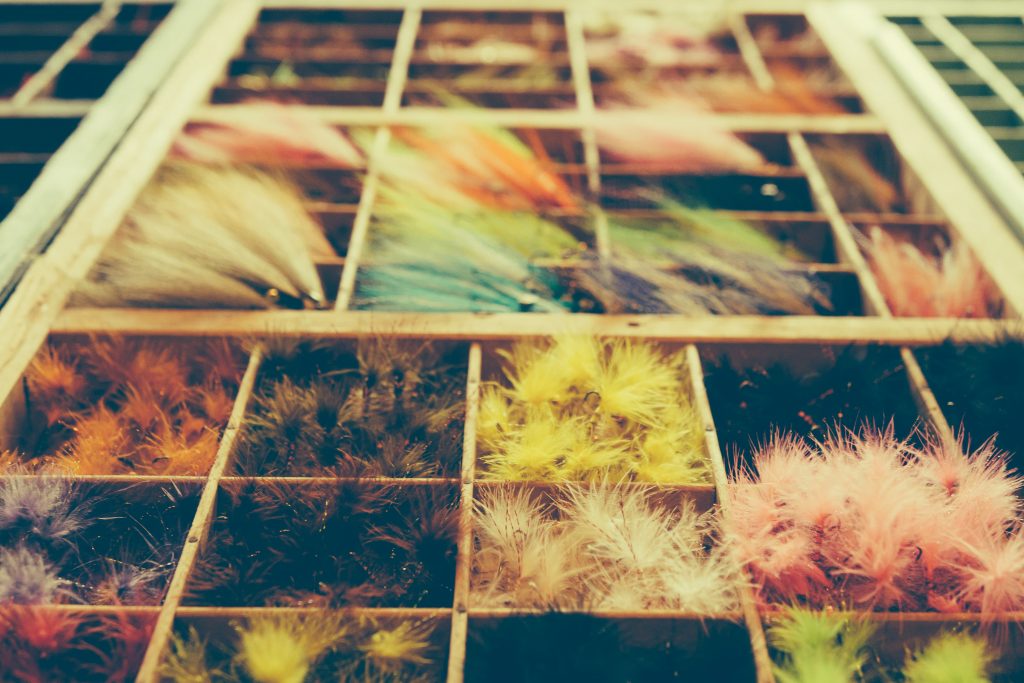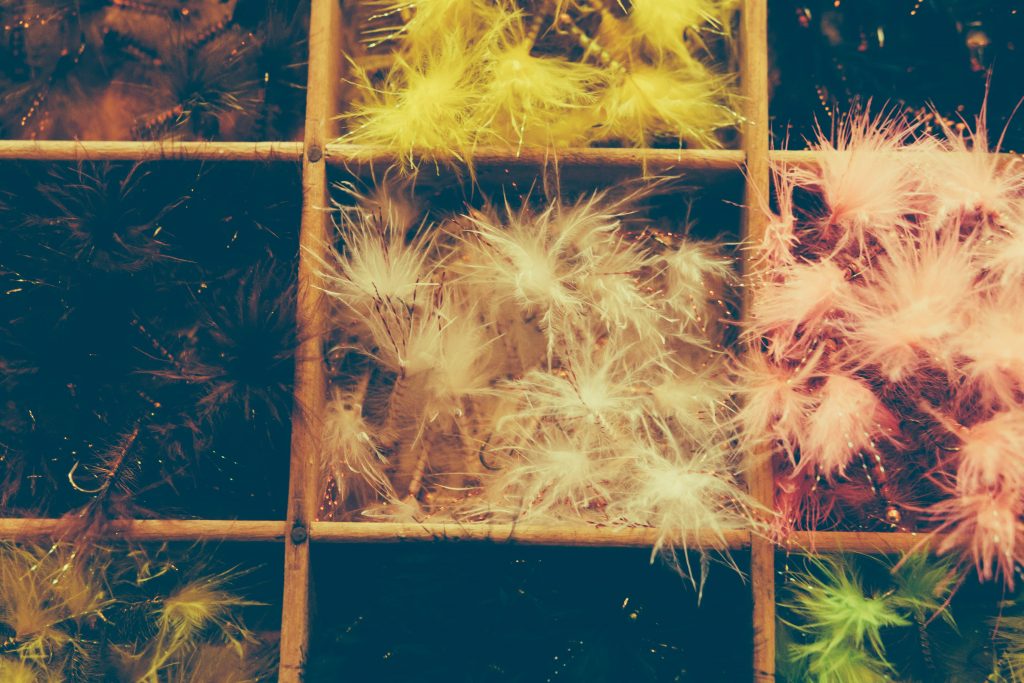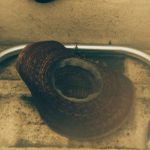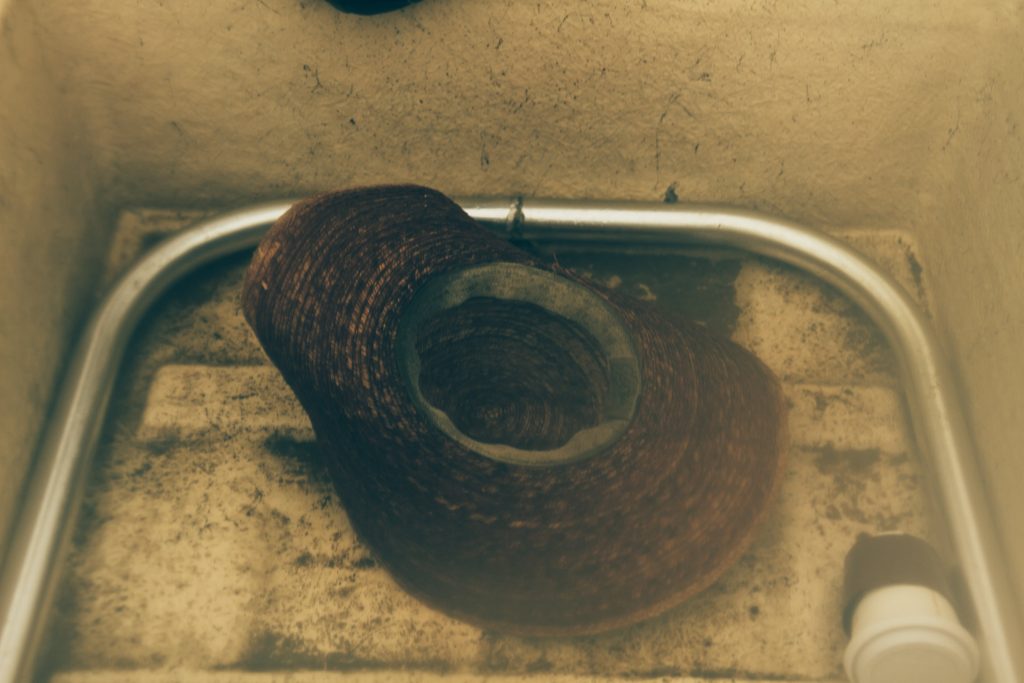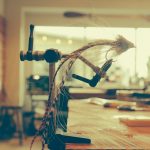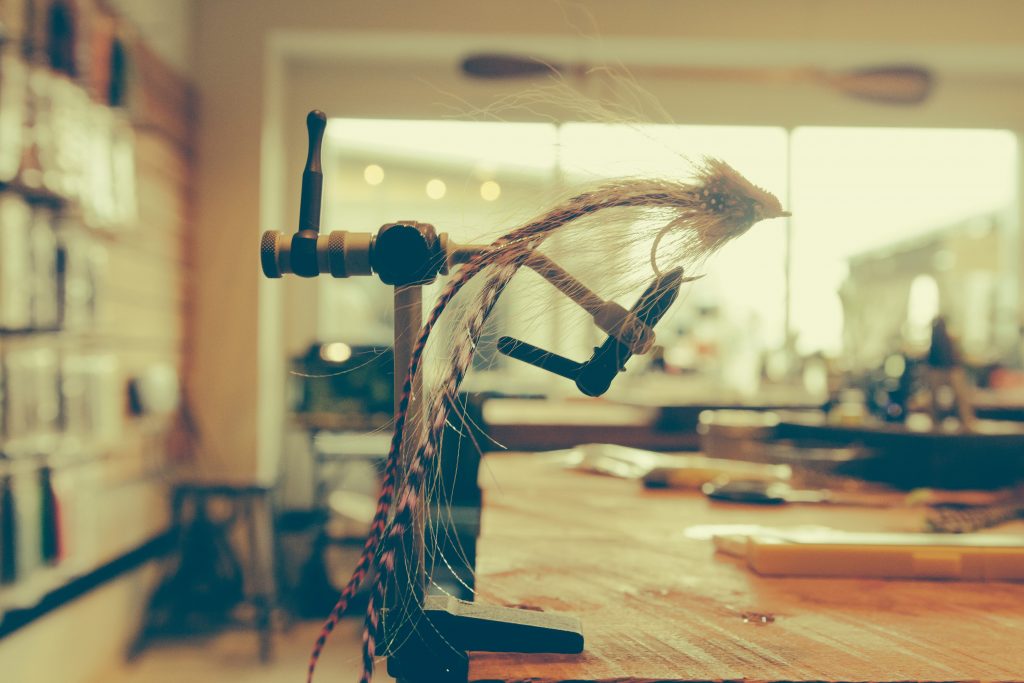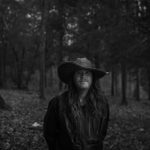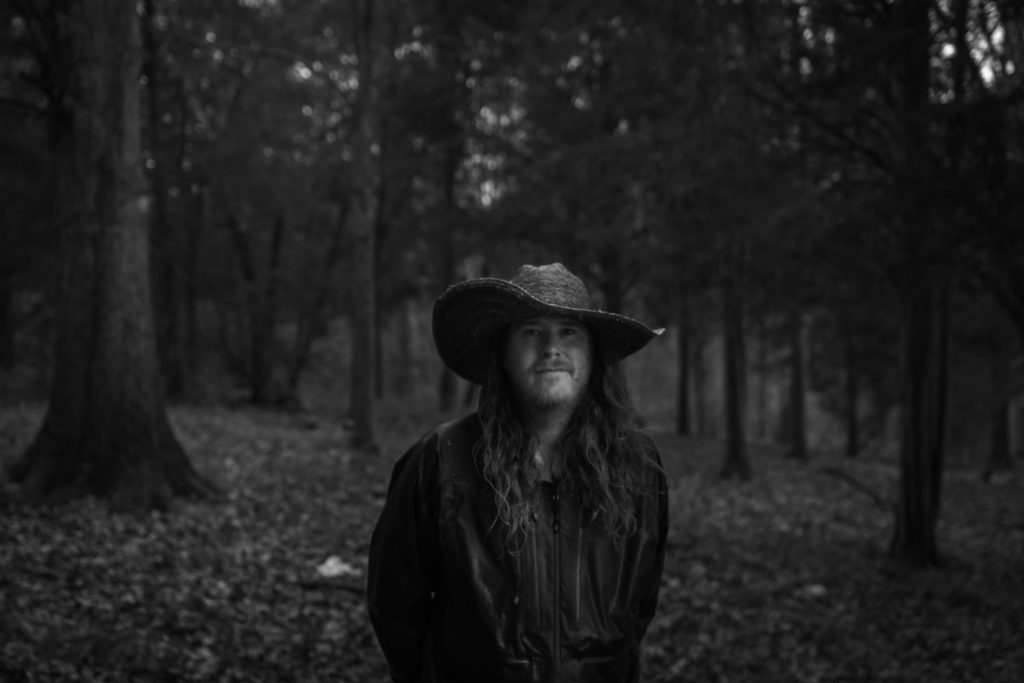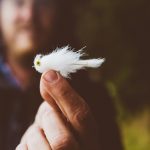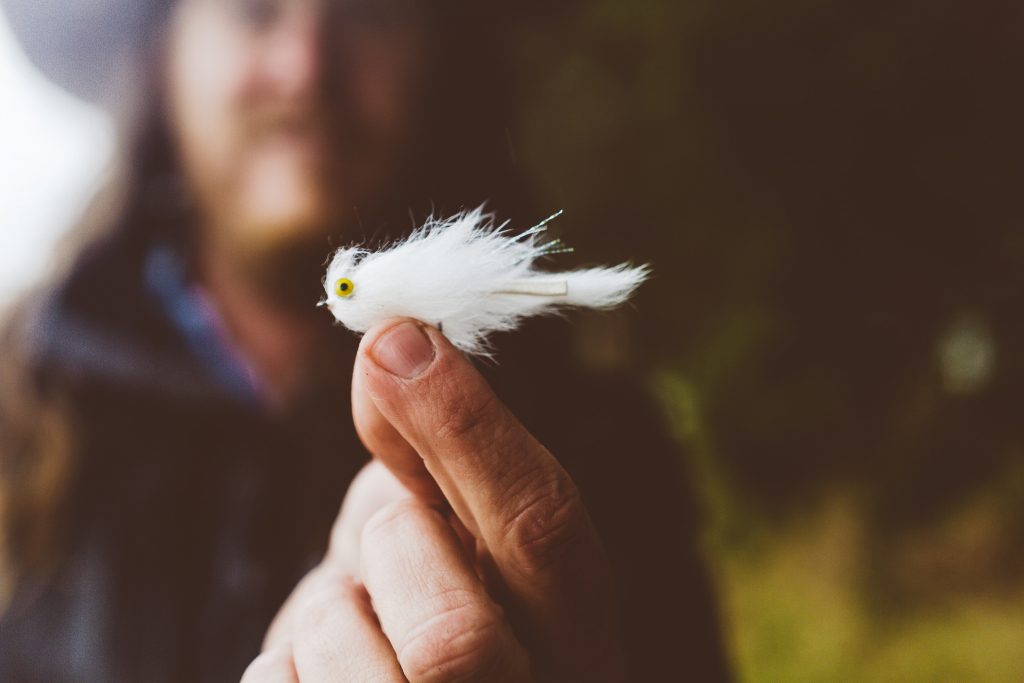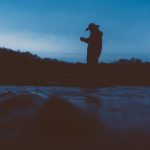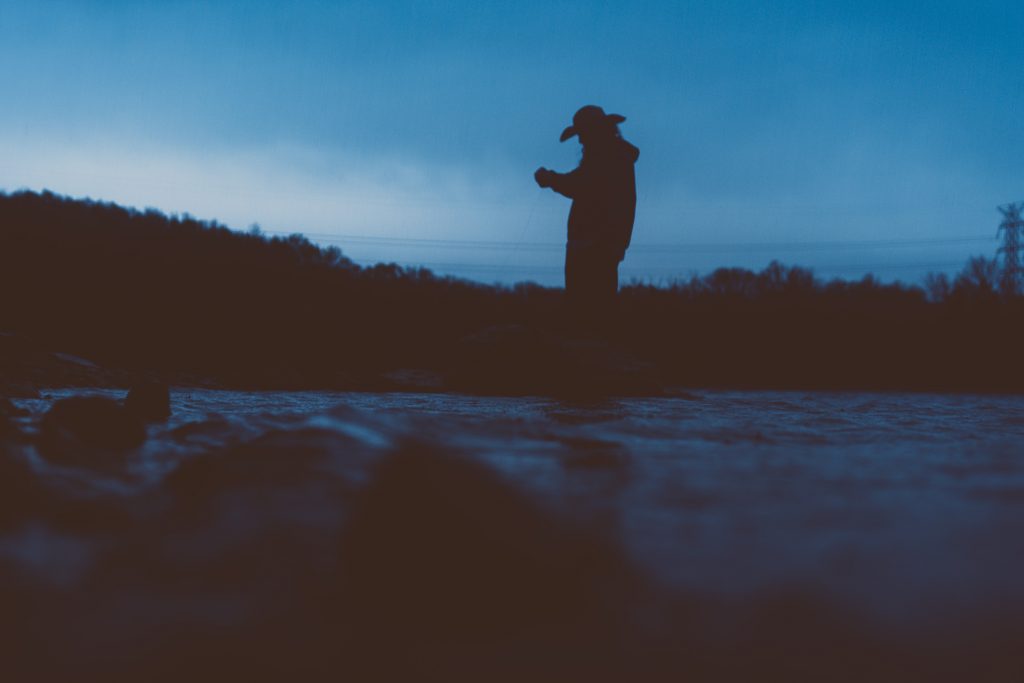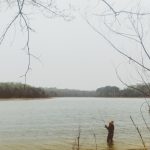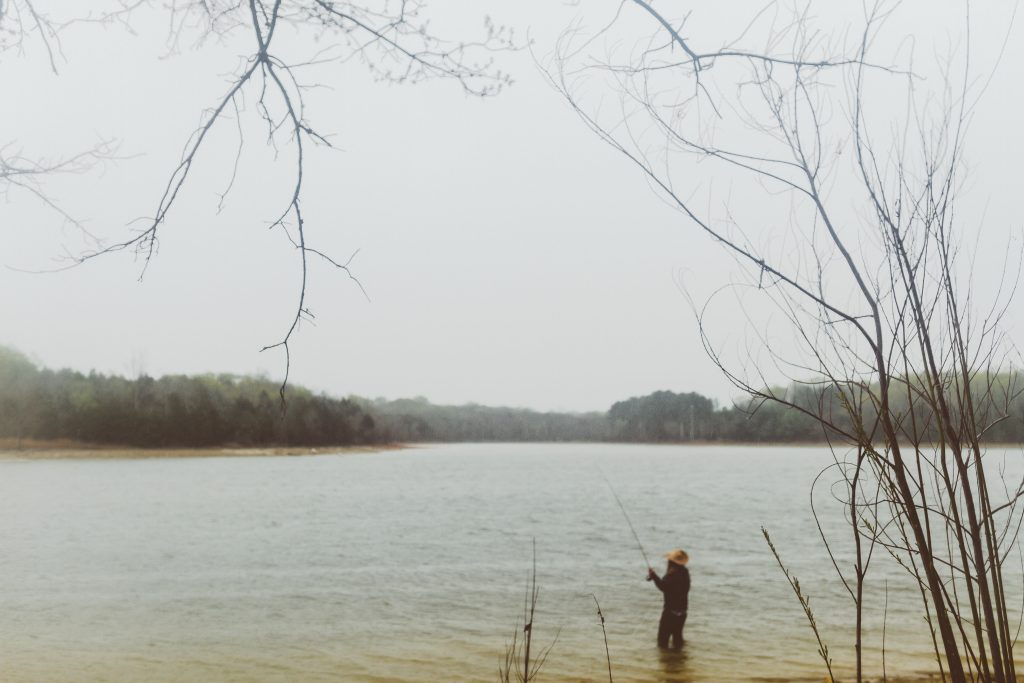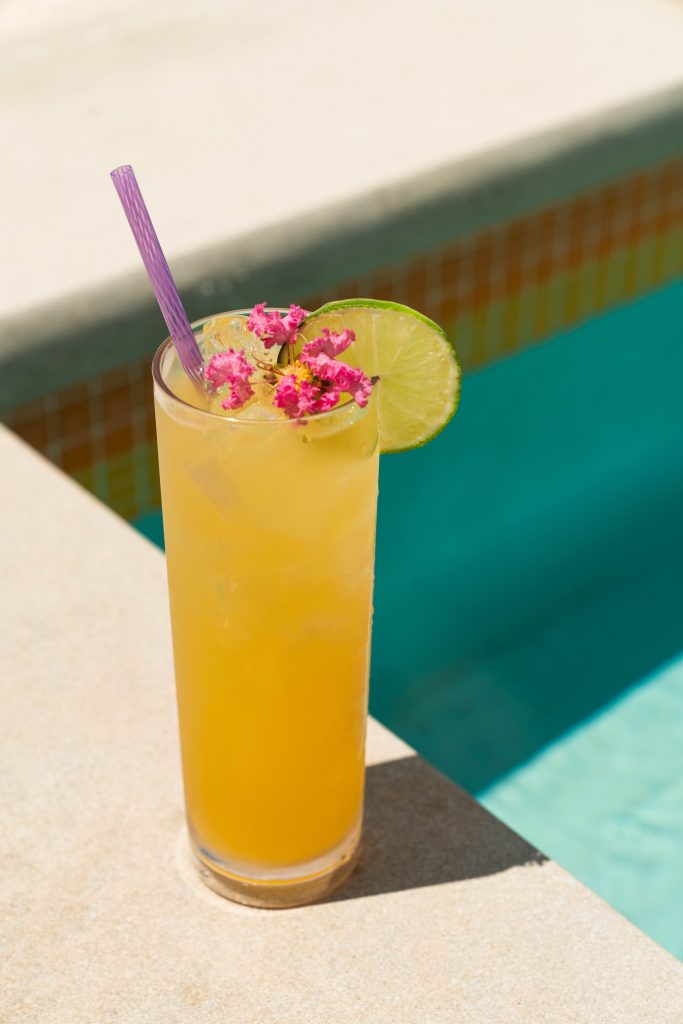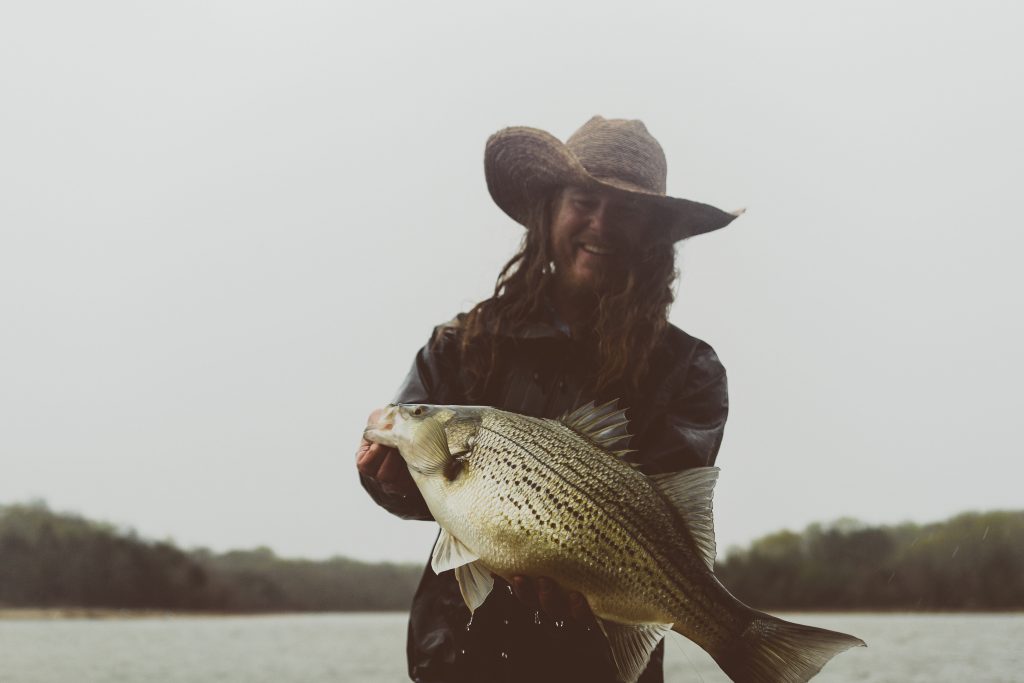
“OH MAN, YOU’RE IN FOR IT NOW.”
Peter Jones, co-owner and co-founder of Jones Fly Company, warns me as he lowers his johnboat into the lapping wake. We—Peter, Jonny (the photographer), and me—are the only ones docking out on Percy Priest today, and with good reason: it’s in the fifties, there’s a thunderstorm about twenty minutes away, and it’s so gray out that the horizon is nothing but an ominous, amorphous, watercolor blob.
Peter says the last time he was out here in this kind of weather he nearly sank the boat. That was when he was fishing with Jones Fly Company co-founder and co-owner Dave Tieman (who’s also the co-founder and co-owner of Five Points Pizza). Today, he’s out here with two schmucks that bought their fishing licenses forty-five minutes prior to stepping foot on his boat.
But it’s okay, Peter maintains, because it’s the ideal day for catching “hybrids.” By hybrids, he means hybrid striped bass (also known as Cherokee Bass), a striped bass/white bass cross that gets its name from the Cherokee Lake in East Tennessee. As a species, they’ve only been around for roughly fifty years, and they were stocked in Percy Priest as game fish sometime in the ’80s.
The hybrids will be biting today for a few reasons. First, low barometric pressure—the kind that happens during a storm—makes the air lighter, which makes the water less concentrated, which makes it easier for the hybrids to swim. Second, high winds blow plankton around, which causes hybrids to swim frantically as they chase it. And finally, it’s the hybrids’ mating season, so they’ll be more likely to—in the words of Peter— “come out [to the banks], get some bait, and fuck shit up” before retreating back to the deeper waters in the middle of the lake to spawn.
These conditions may be great for hybrids, but they’re not so great for three humans on a crowded johnboat. By the time we leave the no-wake zone, we’re already soaked—soaked from the rain above us, soaked from the wake on either side of us, soaked from the water we’re taking in from a small hole in the bottom of the boat.
But that doesn’t stop Peter from hauling ass when we get into the open water. Now the boat’s hitting so much chop that it’s skipping across the wake, and I’m hanging on to the bottom of my seat for fear of going overboard. Peter, on the other hand, sits in the back manning the motor, laughing as he gives it more gas. He keeps yelling—about hybrids, Percy Priest, his love for the Hermitage Hotel’s burger—but most of it’s lost somewhere between the sound of the motor and the wake.
What I do manage to gather—that stuff about barometric pressure, plankton, and spawning—isn’t Peter’s primary concern today. Sure, those things are important, but it’s all just a means to achieving the ultimate goal, which is, of course, catching fish. I get the feeling Peter would learn everything there is to know about Nabokov if he thought it would increase his chances of scoring a thirty-pound hybrid.
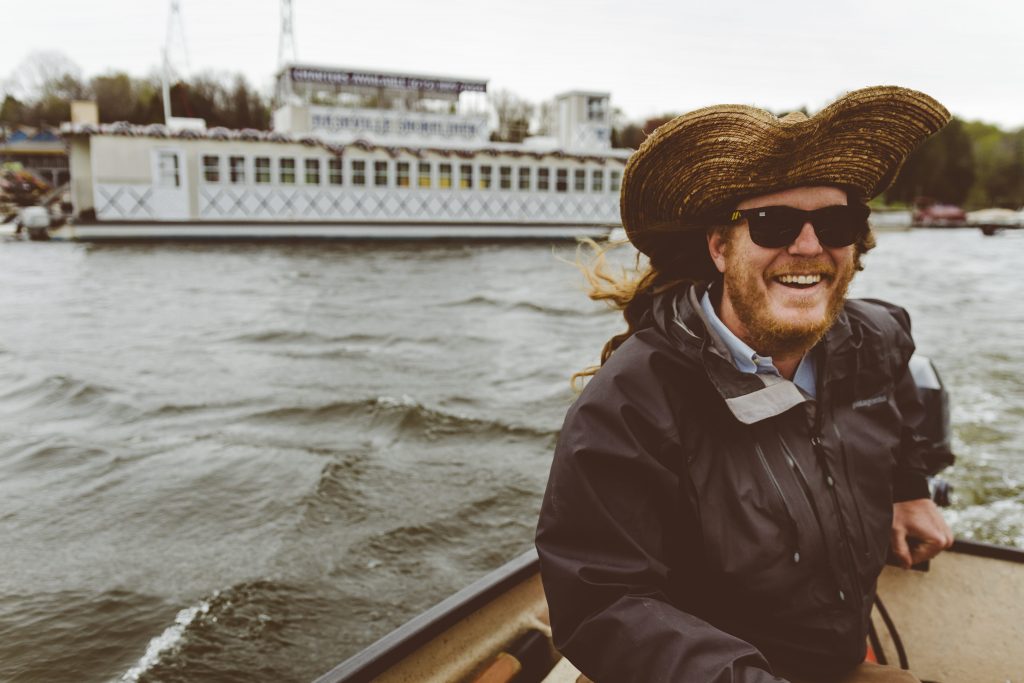
We anchor down and Peter starts prepping the lines. His pliers bounced out of the boat somewhere in transit, so he has to break one of his two sacred fly fishing rules: biting the line. He’s done it so much over the years that his bottom teeth are chipped. His other rule? Sunscreen. Lots of it, even when it’s storming. He puts some on, fits a couple of bunny streamers on our lines, and we wade into the water.
Spoiler alert: fly fishing is difficult. Like, absurdly difficult. Casting a fly rod involves a repetitive “ten and two” motion in which you fling your thirty-foot-plus line forward and backward, forward and backward, forward and backward—like a wind-up metronome set to about sixty beats per minute. This, of course, is the idea in theory. If you’re me, you swing too far back and get caught on some rocks, hit yourself with your line, and inevitably lose your fly. In short, fly casting is like achieving total mindfulness through meditation: you can get close, but you’re never going to get it perfect.
That being said, it seems like Peter’s gotten pretty damn close. In the time it’s taken me to effectively play out a routine from an Earnest movie, he’s caught one decent-sized hybrid and given it to two guys fishing in the cove (Peter usually catches and releases). About ten minutes later, he hooks a stronger hybrid that leads him deeper into the water, deep enough that the tips of his red, Thor-like locks are submerged in the lake. When he finally gets the ten- to fifteen-pounder out of the water, he holds it up for the camera and lets it go. The guys next to us scold him, saying that could have been their dinner. Peter just laughs and says he’ll give them the next one.
On our way back to the dock—as we sit on the boat soaking wet and shivering—Peter repeatedly tells me what a good day it was for fly fishing.
Later that day, when I talk to Dave and Peter at the Jones Fly Company shop on Fatherland, I realize that Peter’s relaxed demeanor and effortless, zen-like cast are indicative of the whole Jones Fly Company ethos. Pretty much everything is a matter of metaphorical catch and release with these guys. Throughout our interview, they rarely stop laughing, they’re constantly greeting neighbors and friends who pass by the shop, and their biggest concern of the night is who’s picking up the next six-pack. The shop has a relaxed, low-key atmosphere that Peter and Dave have organically cultivated through being—well, relaxed, low-key dudes.
So, when I ask why they started the shop, I’m not shocked by their response: “The fly shop that we wanted just wasn’t around,” Peter explains. “That’s a tough thing to talk about without sounding negative and saying you don’t like the other businesses that were in place—we never wanted to go down that road . . . Fly shops can just quickly turn into gear shops that sell Patagonia jackets and stuff like that because apparel sells so well.”
That was certainly the case when Dave, a tax-attorney-turned-pizza-guru, and Peter, a North-Florida-commercial-fisherman-turned-arborist, met back in 2011 through a mutual fishing friend. In those days, if you wanted to buy a fly, your best bet was to go down to Opry Mills and navigate your way through labyrinthine aisles of Carhartt and Duck Dynasty merchandise at Bass Pro. And when/if you finally did find the flies, you’d have to settle for generic and limited options you could find at any outdoors store in the country.
“In this day and age, when people are buying things that are produced through . . . ah, I don’t know the word for it, what’d you call that?” Peter begins, looking to his left at Dave, with whom he’s sharing the shop’s rusted outdoor bench (they prompt each other like this throughout the evening).
“Mass commercial production,” Dave replies.

Peter nods. “The same flies all over the country, in all the different shops. They’re all tied by the same crew in Thailand or wherever they set these crews up.”
All of Jones’s flies, however—from the musky streamers to the stick buggers to the coyote clousers—are made in the shop by a crew consisting of Dave, Peter, and their two employees, Buckley and Matt (Matt is also the drummer in local Southern psych-rock outfit The Kingston Springs). Peter estimates that the shop produces about two hundred to three hundred flies a day, and he tells me that fly styles are tweaked based on the guys’ personal experiences fishing on local waters.
So, for instance, if you’re looking for something to help you catch a striper on the Caney Fork, the guys at the shop will know exactly which fly to recommend. They’ll know because they’ve been there, fished that, and designed the fly to prove it. And they’ll be happy to talk to you about it too.
“You walk in the shop here, and the person that you’re dealing with is most likely the person who actually tied the fly themselves,” Dave says. “And they can tell you why they tied it that way, why they used the materials they did, where they fished it, and how it fished. You can’t really do that anywhere around here that I know of.”
Peter agrees, adding, “[The ideal fly shop] has the flies and materials that you’d like to tie the flies with and has people who work there that are accessible fishermen. A typical fly shop, a lot of times you walk in and the people might not be quite as accessible. Maybe even snooty or a one-upper that doesn’t want to be helpful to people that they think are green. That’s not how all fly shops are at all, but we most definitely never wanted to be one of those places. We wanted to make new fishermen comfortable.”
It’s an inclusive approach to a sport that can feel like a cult dominated by hostile old men in waders, and it’s something I noticed about Peter during our Percy Priest trip. As I was struggling with my tangled line, he kept offering words of encouragement; and on our way back to the dock, he invited me to his next trip because I was “this close” to getting my cast down.
“You know, Peter and I were both brand-new fly fishermen at one time,” Dave says. “It’s a steep learning curve at times, and it’s really, really hard, so we’ve always tried to be accessible to folks. We really want to learn how to do this and do it right.”
One of the key factors in “doing it right” is starting with the right materials. Instead of using artificial furs for their feathered flies, Peter and Dave source their fur from farmers around the country—there are coyote tails from Montana, chicken feathers from Colorado, and the list goes on. Dave even sends his nephews out to collect peacock feathers on a family friend’s farm. There’s a story and a person behind every fur swatch in the store, just like there’s a body of water and a fish for every fly.
If you come into the shop, you won’t find any of the Jones crew sitting behind a computer, waiting for you to check out and leave. Instead, you’ll find them tying flies and gladly telling you about Whiting, the “chicken master” that gets them their chicken feathers; about that time they saw a fishing guide threaten to drown someone; about the difference between a Blue Wing Olive and a rabbit nymph. And they’re hoping that these stories are just the beginning.
“When it comes down to it, this is a never-ending learning process—learning how to fish, learning how to run a fly shop,” Dave says. “We’re just going to keep doing the same thing that we love to do, and that’s figuring out how to tie good flies to go catch the fish we wanna catch.”
Suggested Content
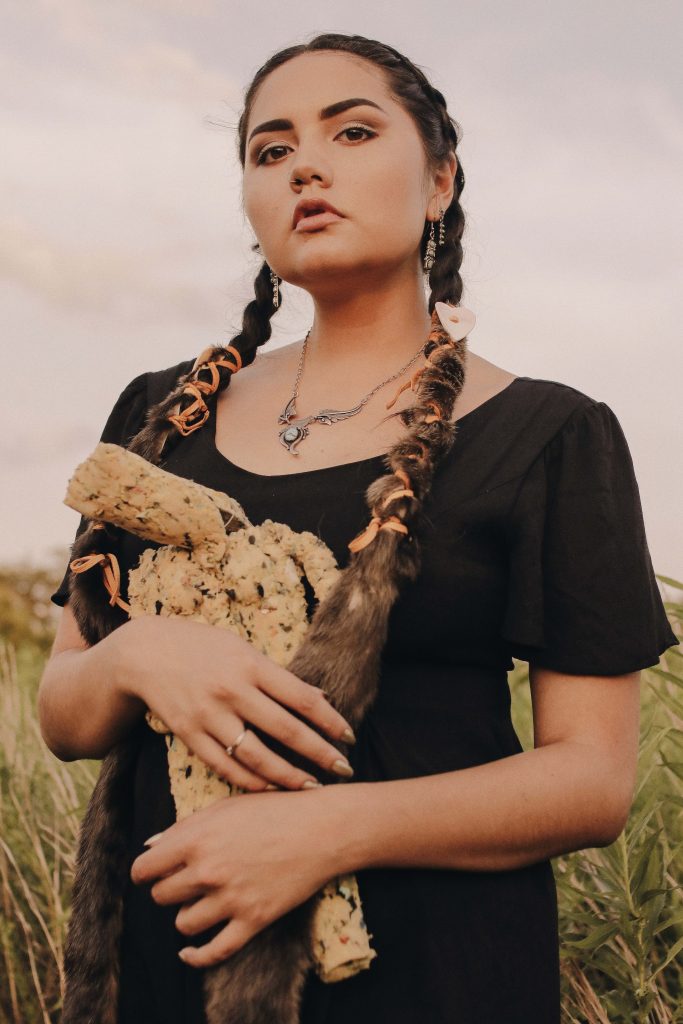
Chelsea Kaiah James
Why aren't there any ears sculpted onto the presidents of Mt. Rushmore? Because American doesn't know how to listen. - Unkown

